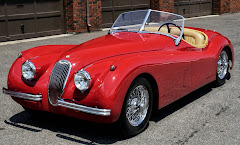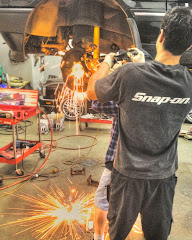This week we saw a Defender with an unusual problem. It sat in our warehouse a couple months, and
when we pulled it out, the engine skipped as oily smoke came out the tail pipe. It
looked like a valve guide or piston had failed but the engine didn’t make noise.
We pulled the plugs and found the left side all wet with
fuel. There was no single oily cylinder.
Apparently one side of the engine was grossly over-fueled.
The owner had told us a local tech had changed his fuel pump
last year, and he’d asked us to check that out.
He also had a “buzzing” relay under the passenger seat. Defenders have the injection relays and 14CUX
in that location.
With those things as clues we looked at the wiring. Nothing was amiss from above, but when we
unplugged the ECU the problem was revealed.
 |
| Corrosion in a Land Rover Defender engine ECU connector (c) JE Robison |
As these vehicles age, the wire harness itself becomes a
more and more likely source of trouble The photo below shows a Mercedes harness where the insulation is cracking off the brown wire. If powered and grounded wires happen to crumble and touch in the same spot - electrical meltdown or even fire!
Even after I've told you about it, it would be easy to miss the fatal flaw in the wire harness above. On some cars the wire insulation crumbles and breaks after thousands of
heat/cool cycles. On other cars it breaks after flexing, like on wires that jump from engine to chassis. We have a Grand
Wagoneer in our shop with that problem now.
The photo above is a closeup of wire harnesses under the floor carpet, typical of most modern cars. The insulation on these wires looks continuous, but cracks (like in the photo above) and pinpricks from the machinery that pulled the wires in the car factory can let water in, and that will rot the wires invisibly until one day you get a circuit failure.
Corrosion can attack any car, and it needn’t be a result of heavy
flooding. Tiny leaks over a long period
of time can eat into harnesses and cause troubles. Technicians seldom look to the wiring as a source of electrical trouble but as cars age, it's more likely.
Sometimes the problems are plain to see, like in this
Defender. Other times the wires corrode
mid-harness and you can’t see a thing but the signal no longer makes it from
one end of the wire to the other.
Solutions to these problems vary. On the Grand Wagoneer, we can buy some wire harnesses, but not all. On the Defender, there are no wire harnesses, nor are there new ECU connectors. Everything has to be improvised or scavenged. There's no rhyme or reason; sometimes you can get whole harnesses, other times just wire. Sometimes you can match original wires and connectors perfectly, other times not.
The takeaway from this Defender: When you have a group os peculiar problems and no apparent relationship, consider that the wiring goes everywhere. In this car, the one shop shown in the photo seems to have caused all the vehicle's troubles. Truly an example of the old adage, "Just minutes to fix it, but hours to learn what to do."
John Elder Robison
John Elder Robison is the general manager of J E Robison Service Company, celebrating 30 years of independent Land Rover, Bentley, Rolls-Royce, BMW/MINI, and Mercedes restoration and repair in Springfield, Massachusetts. John is a longtime technical consultant to the car clubs, and he’s owned and restored many fine British and German motorcars. Find him online at www.robisonservice.com or in the real world at 413-785-1665
Reading this article will make you smarter, especially when it comes to car stuff. So it's good for you. But don't take that too far - printing and eating it will probably make you sick.




























No comments:
Post a Comment